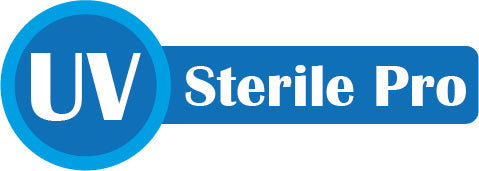UVC Science
The Science of UV-C
UV Pro-MAX uses photon-based air and surface purification from electromagnetic photolysis technology to inactivate pathogens at the molecular level by breaking & rearranging molecular bonds within their DNA & RNA. The molecular bond-breaking completely inactivates these pathogens and effectively eliminates them. This process is done through UV-C technology.
About UV-C Light
Ultraviolet light is electromagnetic radiation with a wavelength shorter than that of visible light. (wavelength: 100–400 nm) The spectrum consists of electromagnetic waves with frequencies higher than those that humans identify as the color violet (purple). UV light is typically found as part of the radiation received by the Earth from the Sun. Most humans are aware of the effects of UV through the painful condition of sunburn.
UV light is electromagnetic radiation, which is divided into four distinct spectral areas including: UVA (315–400 nm), UVB (280–315 nm), UVC (200–280 nm) and vacuum UV (100–200 nm).
Most natural UV light is generated by the sun with about 10% of sunlight being UV, and only about 3-4% penetrating the atmosphere to reach the ground. Of the UV radiation that reaches the earth, 95 percent is UVA and five percent is UVB. Due to it's wavelength, UVC light is unable to penetrate the Earth's ozone layer and reach the Earth's surface. This means that microorganisms have never been exposed to UVC light, and therefore, have not been able to adapt and develop immunity to it. This provides us with what just may be the Holy Grail in the fight against dangerous microorganisms!
Because of the spectral sensitivity of DNA, only the UVC region demonstrates significant germicidal properties. UVC Light has the ability to inactivate or kill microorganisms, including bacteria, parasites, fungus, mites, cold bugs & mycoviruses (including COVID-19) by destroying their DNA in a matter of minutes.
How Does UV Light Work?
UV-C light deactivates the DNA of bacteria, viruses and other pathogens, which destroys their ability to multiply and cause disease. As UV light penetrates through the cell wall and cytoplasmic membrane, it causes a molecular rearrangement of the microorganism's DNA, which prevents it from reproducing. Specifically, UV-C light causes damage to the nucleic acid of microorganisms by forming covalent bonds between certain adjacent bases in the DNA. The formation of such bonds prevent the DNA from being unzipped for replication, and the organism is unable to reproduce. In fact, when the organism tries to replicate, it dies.
Tests have demonstrated that the UVC wavelength of 250–270nm is the most lethal range of UV light for killing microorganisms and viruses. The anti-bactericidal mechanism of UVC is to damage to the RNA and DNA which leads to the formation of dimers between pyrimidine residues in the nucleic acid strands. The outcome of this modification is that it causes deformation of the DNA molecules, which cause defects in cell replication and lead to cell death in a matter of minutes.

Chemical Free Cleaning
Our UV-C lamps are a photon based purification system that produce photolysis. Photolysis is the use to break down chemical compounds. Photolysis kills and inactivates allergens, viruses, bacteria, and mold.
We call this process Electromagnetic Photolysis. This purification system is the most effective disinfection method, the best sanitation method. Purifying the air and all surfaces within the effective range.

